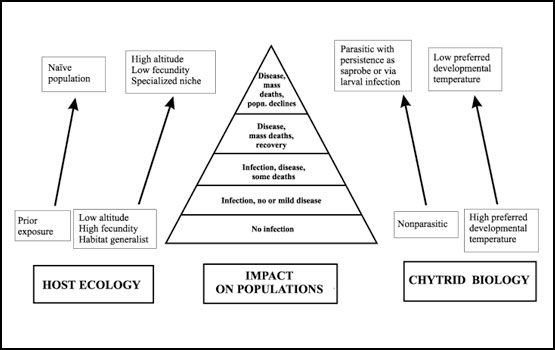Volume 5, Number 6—December 1999
Perspective
Emerging Infectious Diseases and Amphibian Population Declines
Figure 3

Figure 3. Diagrammatic representation of the range of disease outcomes in populations of amphibians affected by a Batrachochytrium-like pathogen. Factors that hypothetically predispose some amphibian populations to declines are illustrated. In this model, host ecologic traits (left side of pyramid) and parasite biologic traits (right side of pyramid) combine to produce declines in a specific group of amphibian species that have low fecundity, are stream-breeding habitat specialists, and occur in montane regions. These characteristics predispose them to population declines after introduction of a waterborne pathogen with a low preferred developmental temperature and ability to persist at low host population densities.1
Page created: December 15, 2010
Page updated: December 15, 2010
Page reviewed: December 15, 2010
The conclusions, findings, and opinions expressed by authors contributing to this journal do not necessarily reflect the official position of the U.S. Department of Health and Human Services, the Public Health Service, the Centers for Disease Control and Prevention, or the authors' affiliated institutions. Use of trade names is for identification only and does not imply endorsement by any of the groups named above.